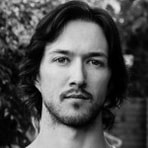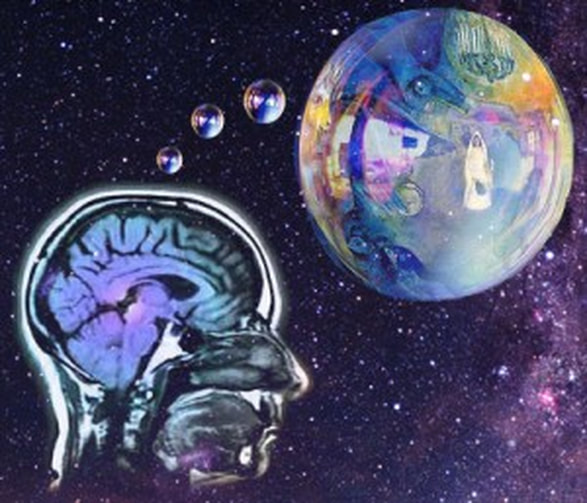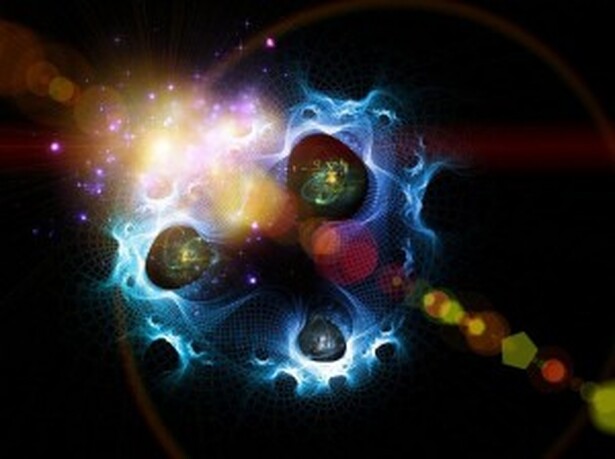Quantum Phase:
Time, Parallel Realities and The Brain
By Brendan D. Murphy
Guest Writer for Wake Up World
Time, Parallel Realities and The Brain
By Brendan D. Murphy
Guest Writer for Wake Up World
|
The ‘Many Worlds’ Theory
The eminent physicist and co-founder of string theory, Michio Kaku, has actually said: “[I]f you have a radio in your living room… and you have all frequencies in your living room; BBC, Radio Moscow, ABC, but your radio is tuned to one frequency — you’re decohered from all the other frequencies. You’re only coherent [wave phase and amplitude in alignment; either exactly or in whole number ratios] with one frequency. We now believe that the universe is vibrating and that there are vibrations of other universes right in this room. There are the universes of dinosaurs because the comet didn’t hit 65 million years ago; the wave function of aliens from outer space looking at the rubble of an earth that already was destroyed — all in your living room, except we have decohered from them. We’re no longer in tune with them, we don’t vibrate with them… Probably there are other parallel universes in your living room, and believe it or not this is called modern physics… get used to it. This is the modern interpretation of the quantum theory, that many worlds represents reality.”[i] Not long ago, almost anyone who uttered such a sentiment would have been dismissed by many as “New Age-y”, “flaky”, and so on, but it is no longer feasible to use such convenient rationalizations with physicists of Kaku’s credibility speaking as a clairvoyant or mystic might. In fact, identical sentiments have been put forth by theosophists a century and more ago in describing the astral plane, which interpenetrates the physical plane without either realm’s inhabitants being aware of the other, “whose senses are normally capable of responding to the undulations of their world only.”[ii] In 1953, Aldous Huxley, having experimented with ingesting hallucinogens such as mescaline, psilocybin and LSD, suggested that the function of the brain, nervous system and sense organs is primarily eliminative rather than productive, operating as a “reducing valve” that protects us from being overwhelmed and confused by a mass of useless and irrelevant knowledge, leaving only the tiny selection likely to be practically useful.[iii] The eminent psychiatrist Stanislav Grof, who has researched the effects of LSD on consciousness extensively, has expressed agreement with this “reducing valve” way of looking at the brain.[iv] By the time of publication of his book The Holotropic Mind in 1993, Grof had completed some 24,000 altered state sessions with clients and patients—no small body of evidence to substantiate his view. In 1983, Swiss scientist Albert Hoffman, who first synthesized LSD (and experimented with it on himself), expressed the view that LSD, by altering the brain’s chemistry, tunes it to other wavelengths from its usual one, thus allowing other realities to enter into one’s awareness.[v] Intuitives have long used the terms vibration and frequency to describe what they see and feel, but only now is it becoming quite apparent how prescient their vernacular actually was, even before the advent of quantum physics. This is the dialect of modern physics, not the old physics that described a “dead”, meaningless world of inert, “solid” matter with only empty space in between, and that featured merely epiphenomenal consciousness. Cybernetician David Foster wrote in a letter to Colin Wilson that the universe is a structure of waves and vibrations, the inner content of which is “meaning”, with man being a micro-system of the same essential vibratory nature within the meaningful universal wave system. He went on to add that the mind is a radio set that can “tune in” to thousands of different vibrations in the aether.[vi] Such “tuning in” yields what we myopically call ESP. Think of it this way: two people with the same quantum phase have a phase difference of zero, and are therefore completely real to each other. To be able to shake hands or interact solidly, we must have the same quantum phase, the same “time-dependent phase factor”, meaning we share the same moment in time. If our quantum phases are altered with respect to each other, our interaction will be less tangible.[vii] One of us may perceive the other as being “ghostly”; the interaction may appear to be “paranormal” — get the idea? In Bearden’s model, the “only difference between any two entities in the various worlds is a matter of orthogonal rotation”, rotation at right angles to the original reference frame/reality. One orthorotation away, the first “hyperspace” in this schema, is the electromagnetic field. Another 90 degree rotation away is the hyperspace occupied by the de Broglie waves. Following this, one more rotation away is a purely mental/virtual world in which 3D objects would be points to us here if seen from our reference frame. According to Bearden, any hyperspace beyond this is only ever three rotational turns away from our frame. Physical phenomena in these frames are mental phenomena with respect to ours — but they are still very real.[viii] This would effectively make the contents of all parallel worlds aspects of our collective unconscious, part of our own psyche. Intriguingly, Rick Strassman, psychiatrist and researcher into dimethyltryptamine (DMT), following his research into the effects of DMT on human consciousness and the anomalous experiences it produced in test subjects, speculated that parallel universes might be familiar to us, even if the organisms and technologies therein developed along drastically different lines. He believes that reptilian and insect-like beings, and unrecognizable shapes imbued with intelligence, should not be unexpected, and nor should highly advanced forms of technology — all of which were reported by his DMT test subjects.[ix] Holding all of the above firmly in mind, we note those bizarre instances — of which there are documented cases — wherein people have inexplicably found themselves witnessing, or even participating in, a scene from a “parallel” reality, sometimes what they perceive as the “past”. For instance, on August 10, 1901, two Oxford professors, Anne Moberly, the principal of St. Hugh’s College, and Eleanor Jourdain, the vice-principal, were wandering, lost, through the garden of the Petit Trianon at Versailles when they were both overcome with sudden feelings of gloom, depression and unease, though they said nothing of it to one another at the time. Suddenly the scenery seemed somehow abnormal, lifeless and unreal. Two men in “long greyish-green coats, with small three-cornered hats” suddenly appeared and directed the women to the Petit Trianon. They strolled past an isolated cottage where a woman and a 12- or 13-year-old girl were standing at the doorway, both wearing white kerchiefs fastened under their bodices. Jourdain would later write that “both seemed to pause for an instant, as in a motion picture.” The two continued on their way and soon reached a pavilion that stood in the middle of an enclosure. A sinister-looking man was sitting outside the pavilion, his face repulsively disfigured by smallpox, wearing a black cloak around his shoulders and a slouch hat — bizarre dress for the period and the weather. He turned to look in their direction, though seemed almost to stare through them, not responding to their presence. Still, it was enough to make them feel extremely uncomfortable and the two professors walked on in silent unease until they reached a small terraced country house.
A lady was sitting in full view on the lawn with her back to the house, though, bizarrely, only one of the pair saw her, despite both being keenly on the lookout for someone to ask for directions. The woman, oddly dressed for the period in a summer dress with a long bodice and a very full but short skirt, held a large sheet of paper or cardboard in her hand and seemed to be working at a drawing. She had a pale green fichu or kerchief draped around her shoulders, and a large white hat covered her fair hair. As Moberly and Jourdain continued on, a young man, again oddly dressed, ran up to them and urgently offered them directions towards the Petit Trianon, which they eventually located and entered, finding themselves in the midst of a wedding party wherein the participants were dressed in the garb of 1901, their time. On subsequent trips to the Petit Trianon gardens the women found to their bafflement that a path they had walked down on their initial visit was now blocked by an old stone wall, and had been for some time, evidently. Others no longer existed at all. Overall, the layout and dimensions of the grounds and buildings was completely and yet unaccountably different. The kiosk where the disfigured man sat, for instance, was no longer there. Home in England searching through historical records, the women concluded that they had perhaps been transported into Queen Marie Antoinette’s actual memory of the day (August 10, 1792) in which the sacking of the Tuileries and the massacre of the Swiss Guards had taken place — which accounted for the agitated manner of the people in the garden and general sense of oppressive gloom — and that the woman seated in the garden was none other than the Queen herself. Moberly later came across a picture of Marie Antoinette drawn by the artist Wertmüller and was able to identify her as the same sketching woman she had seen near the Petit Trianon — even the clothes were the same. The pockmarked and “evil”-looking man by the pavilion, the records suggested, may have been the Queen’s betrayer, Comte de Vaudreuil. [x] Moberly and Jourdain’s descriptions of the layout of the gardens and the outbuildings were unknown by Versailles historians at the time but were later verified by painstaking search and scrutiny of obscure records of Louis XVI’s court, including wages he paid to gardeners and carpenters for specific projects.[xi] String theorists and cyberneticians rejoice. Probably the most compelling element of this particular report is that people from the scene/period approached the two women and addressed them specifically, demonstrating that they were not merely invisible bystanders, but very much real and perceptible. Thus, the women had essentially been transported back in time; they weren’t just witnessing a scene as outside observers, they were there in the “past”. In a 1957 paper on how the focus of our awareness creates our reality, Hugh Everett described “simple moments in time when it becomes possible to jump from one reality to another by creating a quantum bridge between two already existing possibilities.” One wonders if he had intended to include such possibilities as this time-warping one. Everett called these windows of opportunity “choice points”.[xii] He was, evidently, very much aware of the pluralistic nature of “reality”. Events such as Moberly and Jourdain’s are familiar even to government-employed remote viewers. As we have seen, and will see further, in quantum physics the past, present and future are not clearly distinguishable from one another and research is ongoing into the effects the future has on the present (you read that correctly). In short, past, present and future — all of them — exist now. In the words of physicist and string theory exponent Brian Greene, “If you were having a great time at the stroke of midnight on New Year’s Eve, 1999, you still are.” (We will return to this comment again soon.) From the many-worlds perspective, there is nothing particularly unusual about this event. The occultist might suggest that the women had essentially stepped into an Akashic record of the past. So, were these two women of the 20th century actually there in the 1700s? Taking the view of the many-worlds interpretation, in at least one version, they were (and still are), and perhaps somewhere in that “parallel reality” there exists a record in some long since departed soul’s tattered old diary of the two “oddly dressed” women who seemed out of place in the garden of the Petit Trianon that day as everyone bustled about hastily and on edge. There is no “separate time period”, simply a larger hyperdimensional reality that enfolds all time. If we could step into a hyperframe and see all instants through history frozen in time, we could choose a different one to step into and experience. Novikov applied the “principle of least action” to time travel, and, in what Strieber refers to as a “brilliant feat of mathematics” showed that the only movements through time satisfying this principle must be those in which the 'grandfather paradox' cannot apply: “time travel will never cause a situation in which one of these paradoxes could take place.”[xiii] If we were to access a particle stream moving faster than light, we could theoretically time-travel. As Einstein’s 'relativity' showed, the faster something moves, the slower its subjective time passes, and if it were to break the light speed threshold, it would then be traveling backwards in time (time would “reverse”). Author Whitley Strieber asked in 1997 if the mind could somehow enable time travel.[xiv] Strieber has had his own Versailles-like experiences, so he already knew the answer. It is “yes”. Government-backed research has validated this notion, as we will see. Nobel laureate Frank Wilczek says, “We are haunted by the awareness that infinitely many slightly variant copies of ourselves are living out their parallel lives and that every moment more duplicates spring into existence and take up our many alternative futures.”[xv] Max Tegmark of MIT has expressed a virtually identical view.[xvi] Kaku mentioned in his description of reality something called decoherence, a theory stating that though all these infinite parallel universes are possibilities, our universe’s wave function has decohered from them: it no longer vibrates in unison/in phase with them. It therefore no longer interacts with them. The result is that though we might co-exist simultaneously with the wave function of inhabitants of other universes, we are no longer “in tune” with them.[xvii] Nobel laureate Steve Weinberg has also used the radio station in the living room analogy to describe our situation.[xviii] This is a very apt analogy for the reality we find ourselves in. The decoherence interpretation of quantum mechanics leads to multiple universes/many worlds and avoids the postulation of a wave function collapse. For the time being we note that these parallel worlds postulated by the many-worlds interpretation of quantum mechanics, or “decohered universes”, actually do, in rare circumstances, spill over into this world, so to speak. References:
|
About the Author:

Critically acclaimed author (“The Grand Illusion : a Synthesis of Science & Spirituality?) and co-founder of Global Freedom Movement, Brendan D. Murphy is a leading expositor of the new paradigm of integrated science and spirituality/sovereignty. He is a passionate advocate of accelerated conscious evolution through sound-based DNA/kundalini activation and intentional harnessing of the life-supporting (negentropic) aetheric forces of consciousness, while also having experience in psychoenergetic and belief change modalities.
For Brendan, compassionately hacking the Matrix is more than just sport, it’s a way of life. He lives and breathes it, taking a stand for truth and beckoning others to join him on the path of informed, compassionate and courageous living. Understanding that the outer world always holographically reflects the inner, Brendan believes idle research and information absorption is not enough — we must embody our ideals now and transmute knowledge into wisdom through wilful and gutsy application.
“Enough of the slave species legacy we’ve been playing out for millennia! It’s time to rediscover sovereignty, infinite consciousness and our multi-dimensional selves. Evolution is calling. Will we answer?”
You can connect with Brendan at BrendanDMurphy.net and GlobalFreedomMovement.org.
For Brendan, compassionately hacking the Matrix is more than just sport, it’s a way of life. He lives and breathes it, taking a stand for truth and beckoning others to join him on the path of informed, compassionate and courageous living. Understanding that the outer world always holographically reflects the inner, Brendan believes idle research and information absorption is not enough — we must embody our ideals now and transmute knowledge into wisdom through wilful and gutsy application.
“Enough of the slave species legacy we’ve been playing out for millennia! It’s time to rediscover sovereignty, infinite consciousness and our multi-dimensional selves. Evolution is calling. Will we answer?”
You can connect with Brendan at BrendanDMurphy.net and GlobalFreedomMovement.org.

